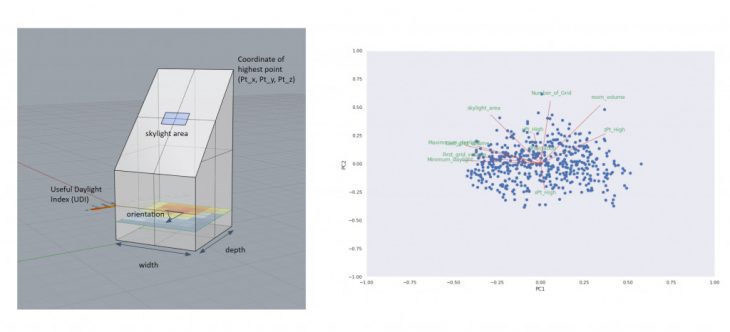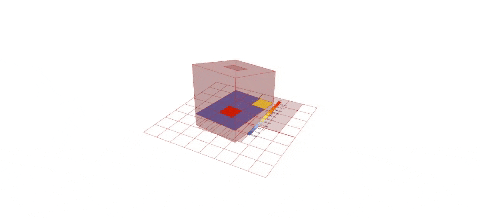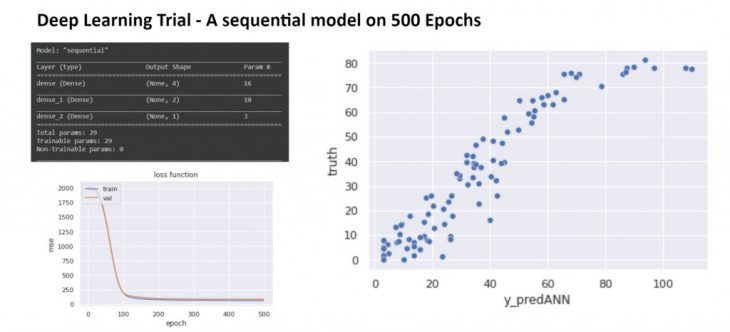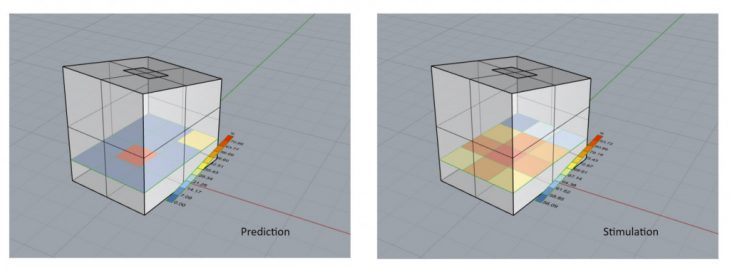Daylight Prediction
The project taught me on data encoding because it is a stepping stone towards machine learning. It started with an interest in the use of daylight in public space. After several trials and errors, I decided to simplify and focus on one skylight in an interior space. Generally, stimulation software, such as Honeybee, fulfill the requirements for daylight analysis, and compute the annual daylight metrics, for example, useful daylight illuminance, of an interior. The project aimed to reduce computation time and allow real-time response to identify any location with daylight deficiency.

Input parameters and their relationships
Sample Creation
I created the samples by altering the width and length of both the interior and the skylight. Then, I changed the height of one side of the interior to create a roof angle. In the end, I rotated the interior to stimulate different orientations. For instance, based on results from Honeybee on 1000 samples, I chose to carry out deep learning using a convolutional neural network.
Results
After creating the samples, I obtained a prediction model and verified its results against those from the stimulation. The model can predict the locations where the minimal and maximal daylight occur. However, the accuracy requires further improvement, as the minimal value from the prediction is higher than the actual stimulation. The number of samples and the structure of the neural network may be inadequate. Therefore, they caused the inaccuracy.

Various Predictions

Result from Machine Learning
Lesson Learnt
In conclusion, the model still requires a lot of improvement to be deployed as a prediction tool. The recommendation includes an increase the number of samples to 2000 and employment of other neural networks with other structures. Predicting all values on the grid covering the whole interior is challenging, due to the limited number of inputs. If I can improve the accuracy, it may be more fruitful to repeat the project with daylight data from other cities on different latitudes. In doing so, it can become a more valuable prediction tool.

Interior Daylight Prediction
Interior Daylight is a project of IAAC, Institute for Advanced Architecture of Catalonia developed in the Master in Advanced Computation for Architecture & Design in 2020/21 by:
Students: Alexander Tong Faculty: Gabriella Rossi, Illiana Papadopoulou